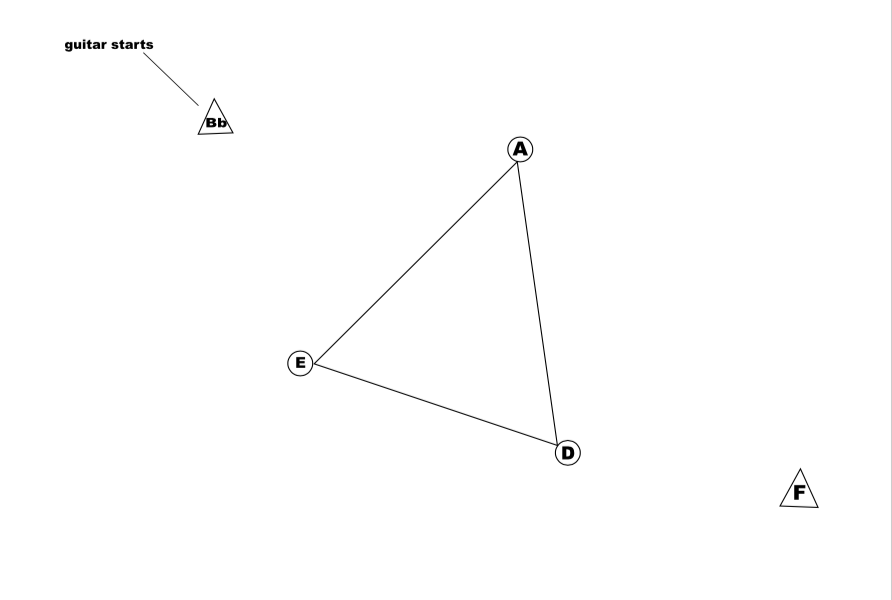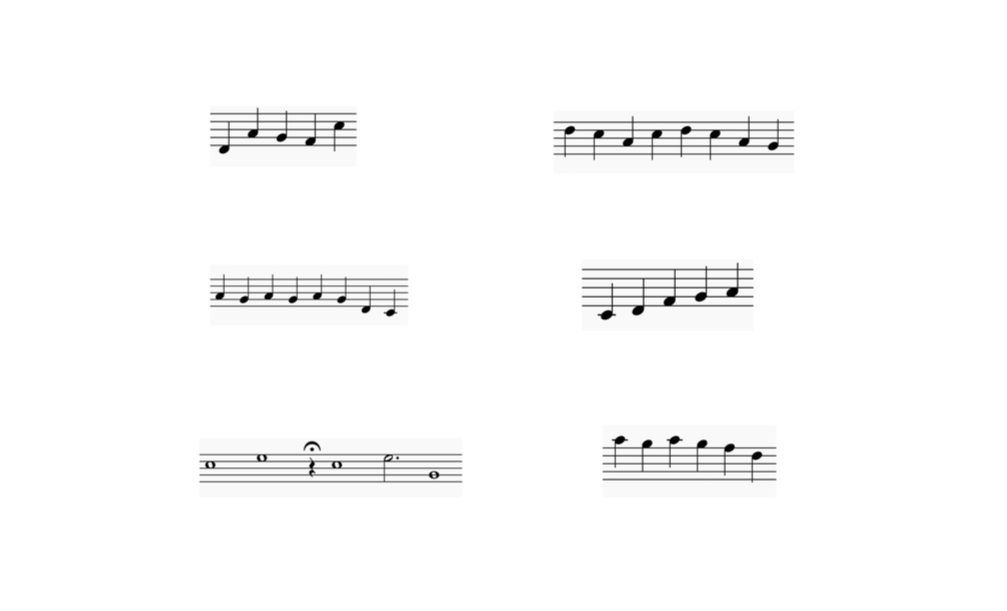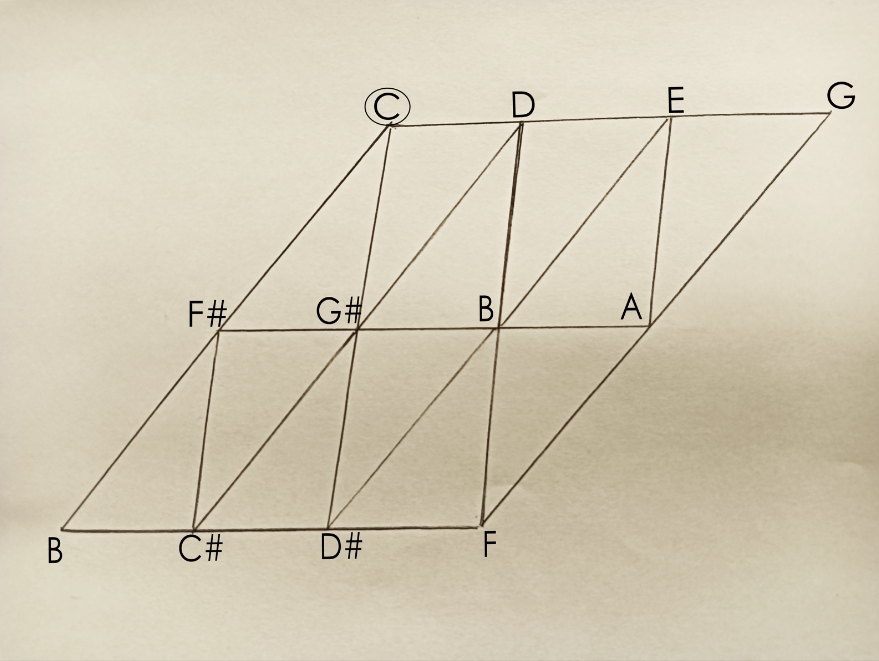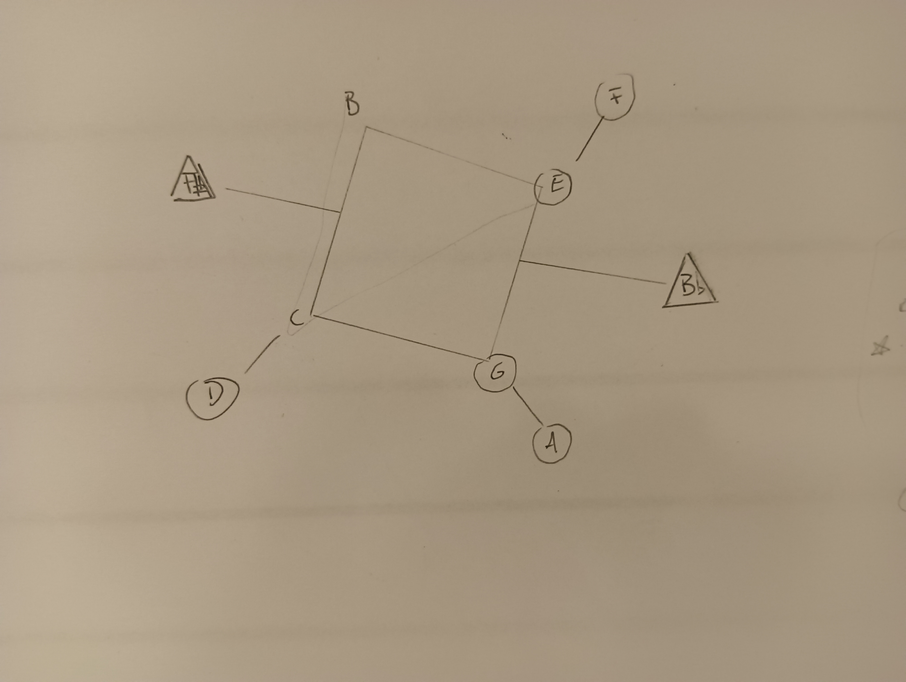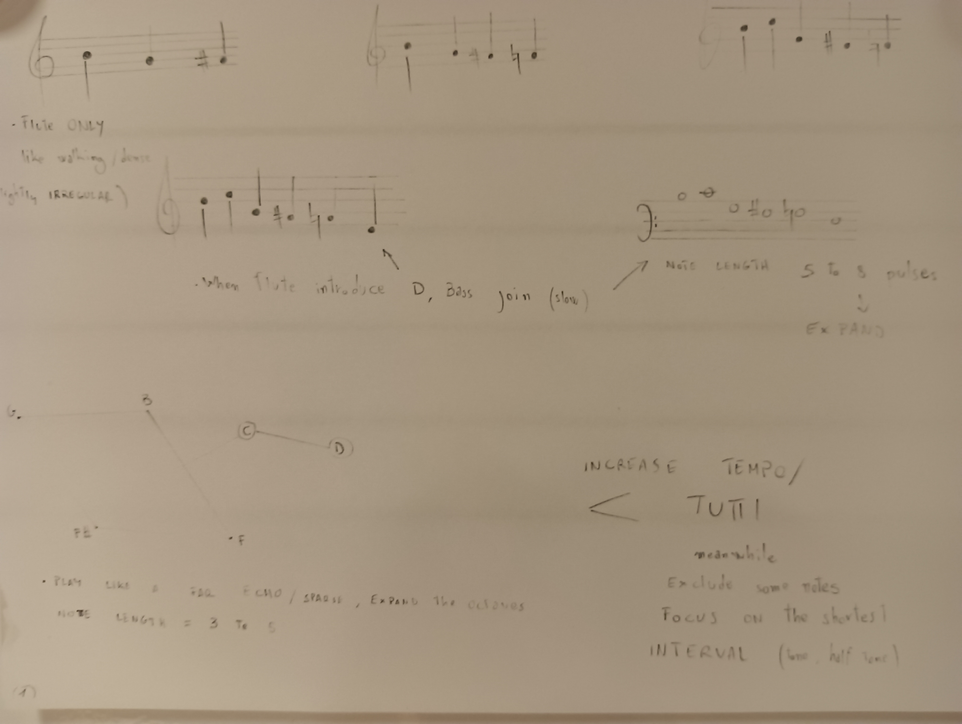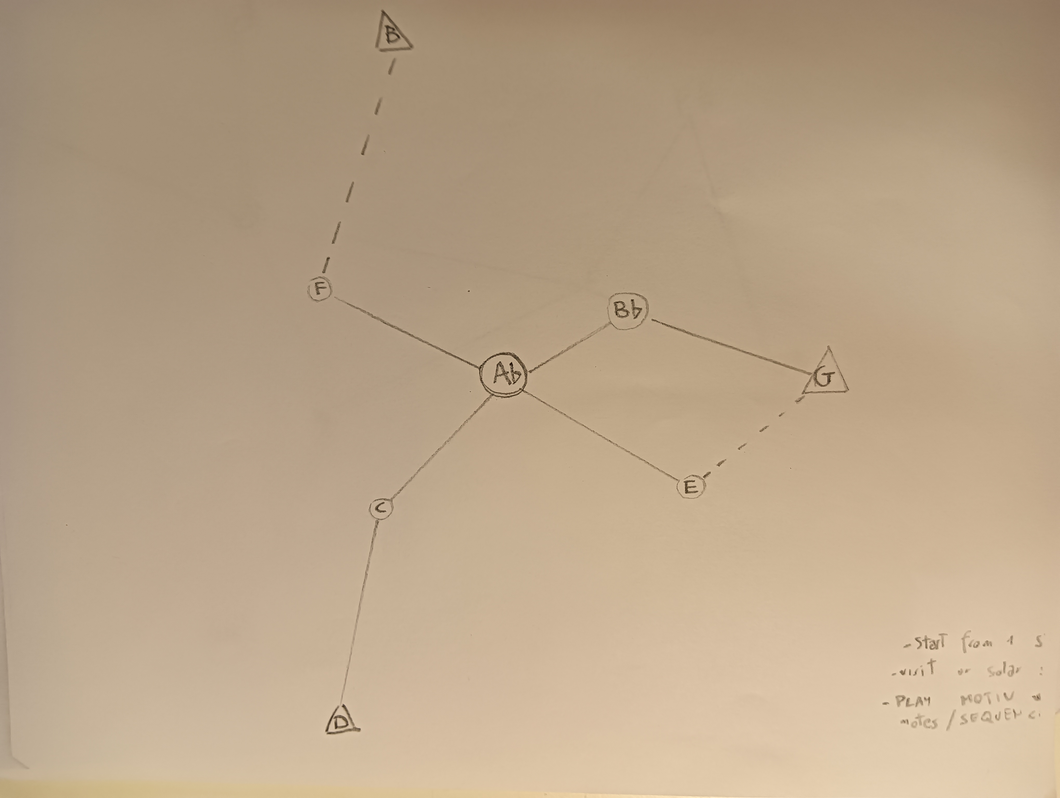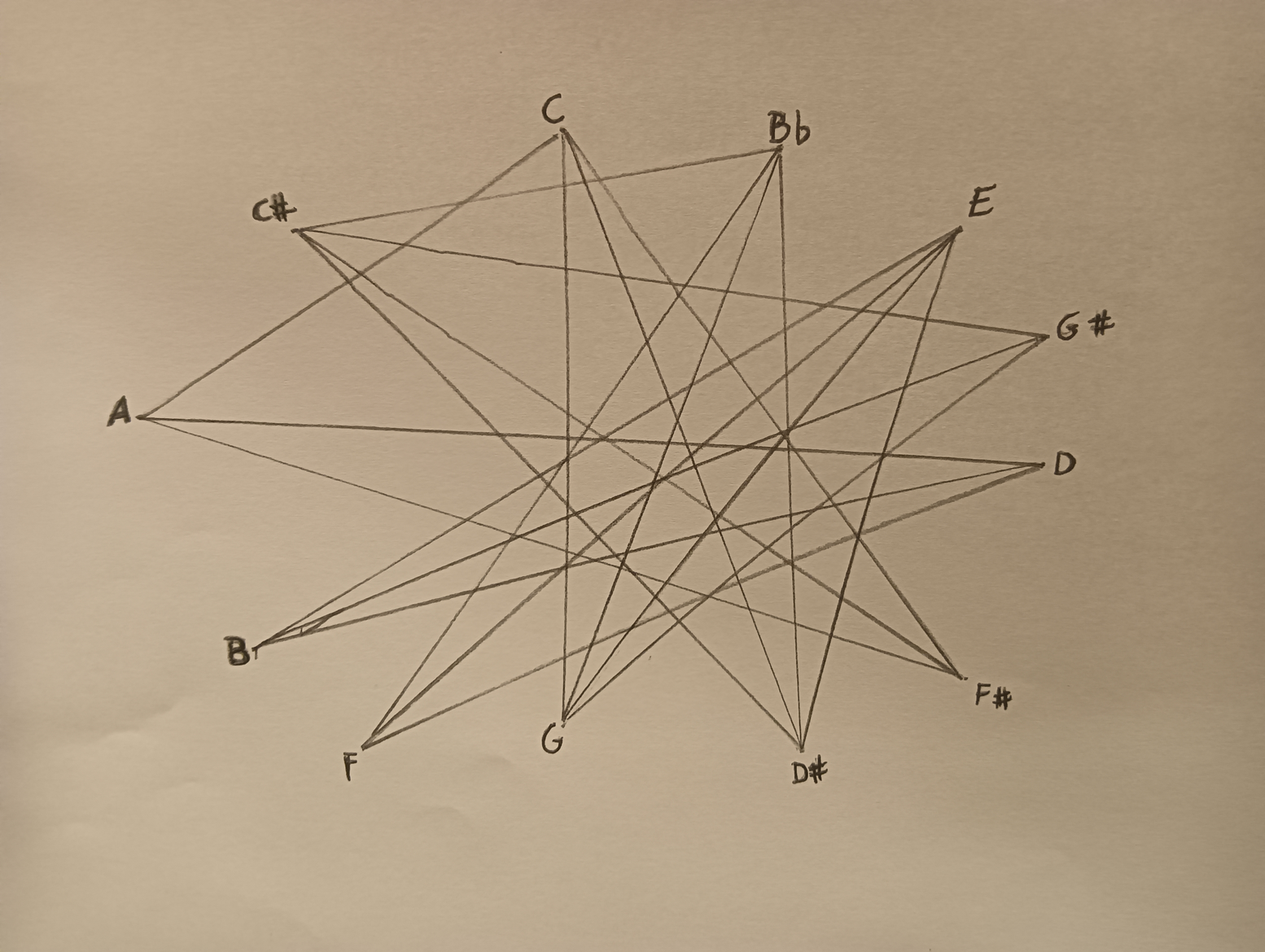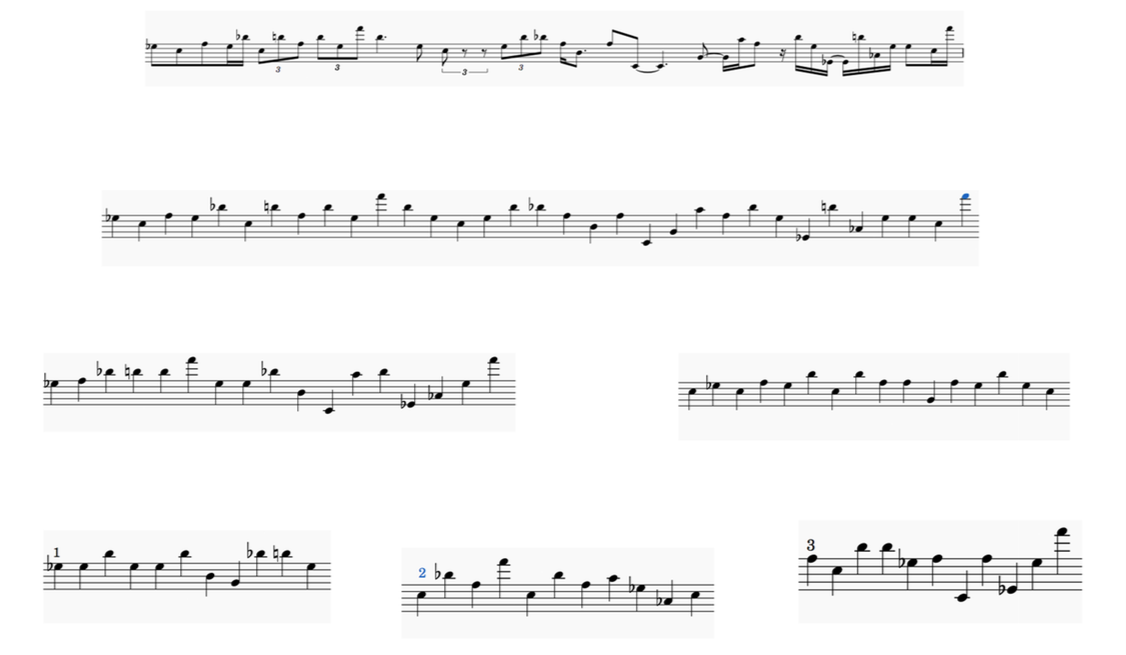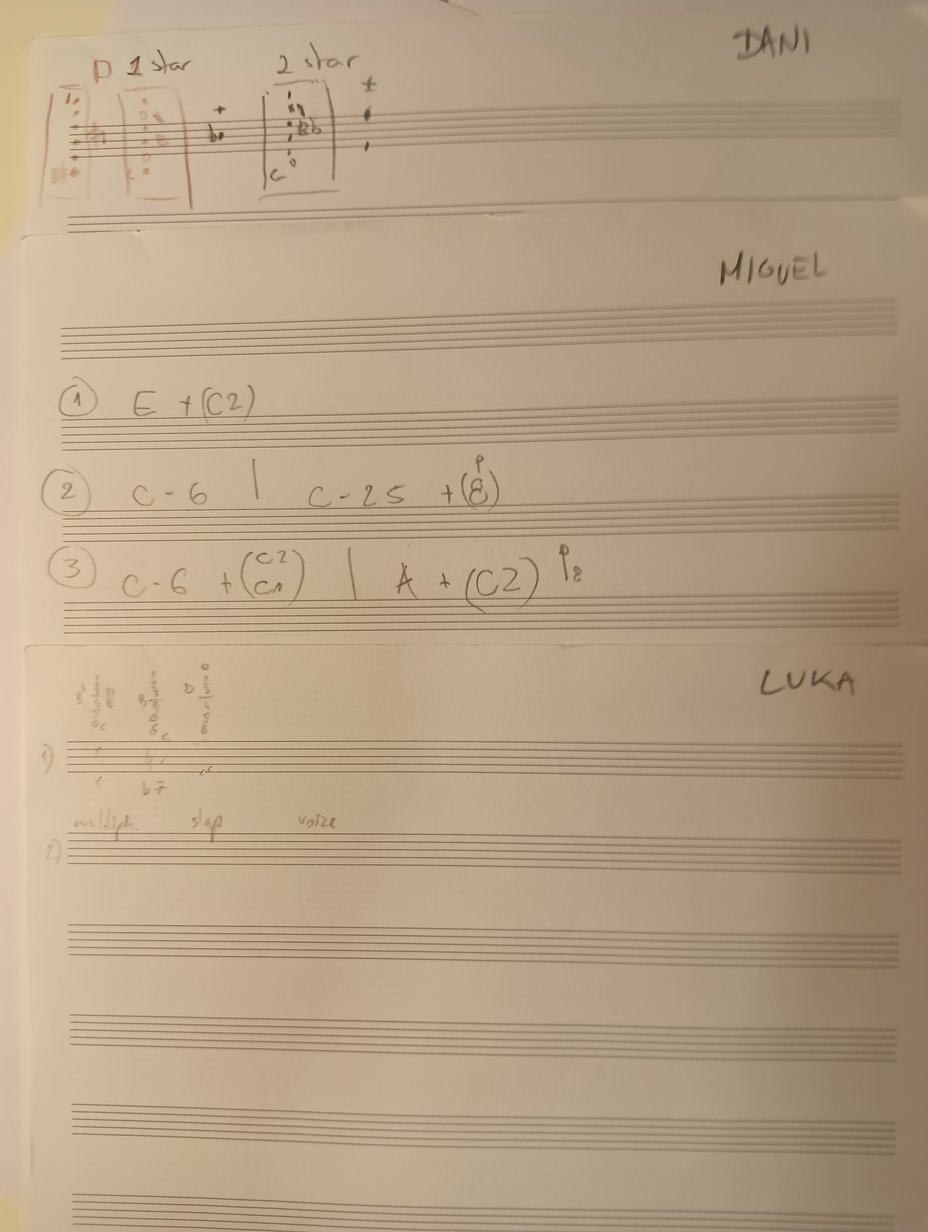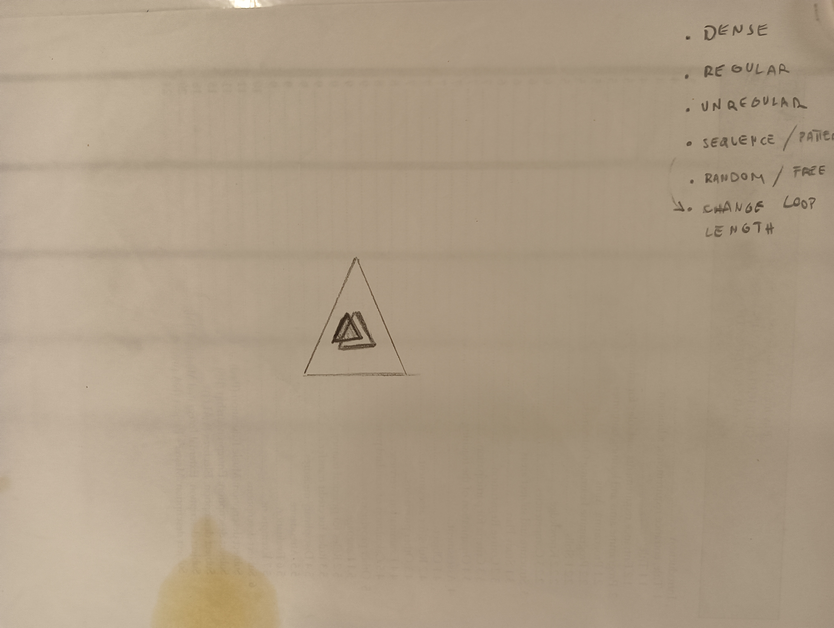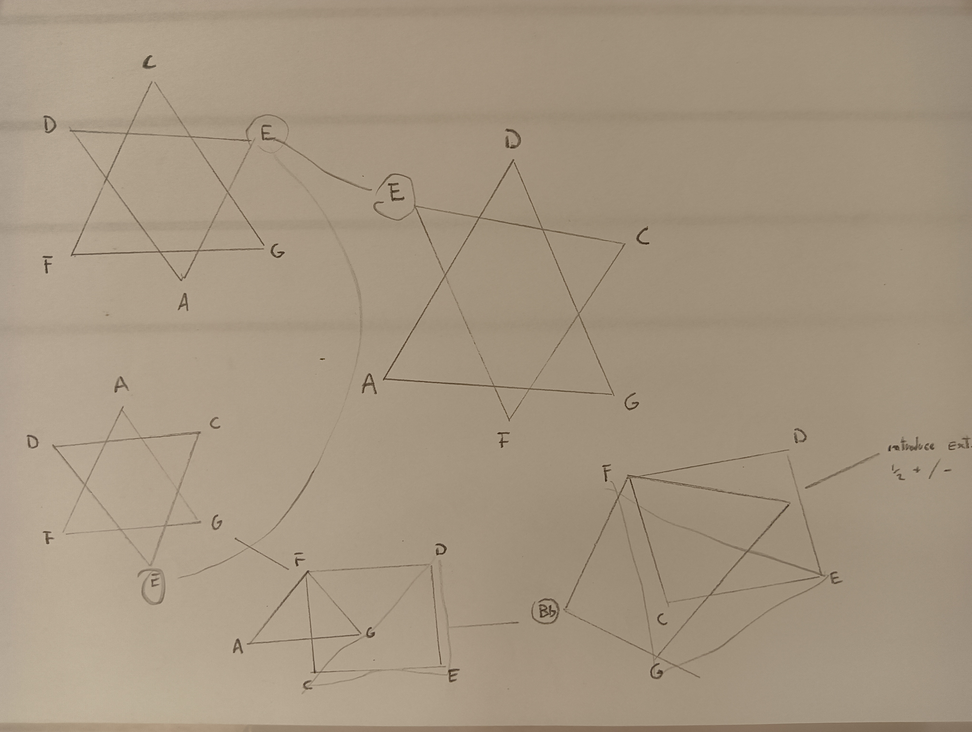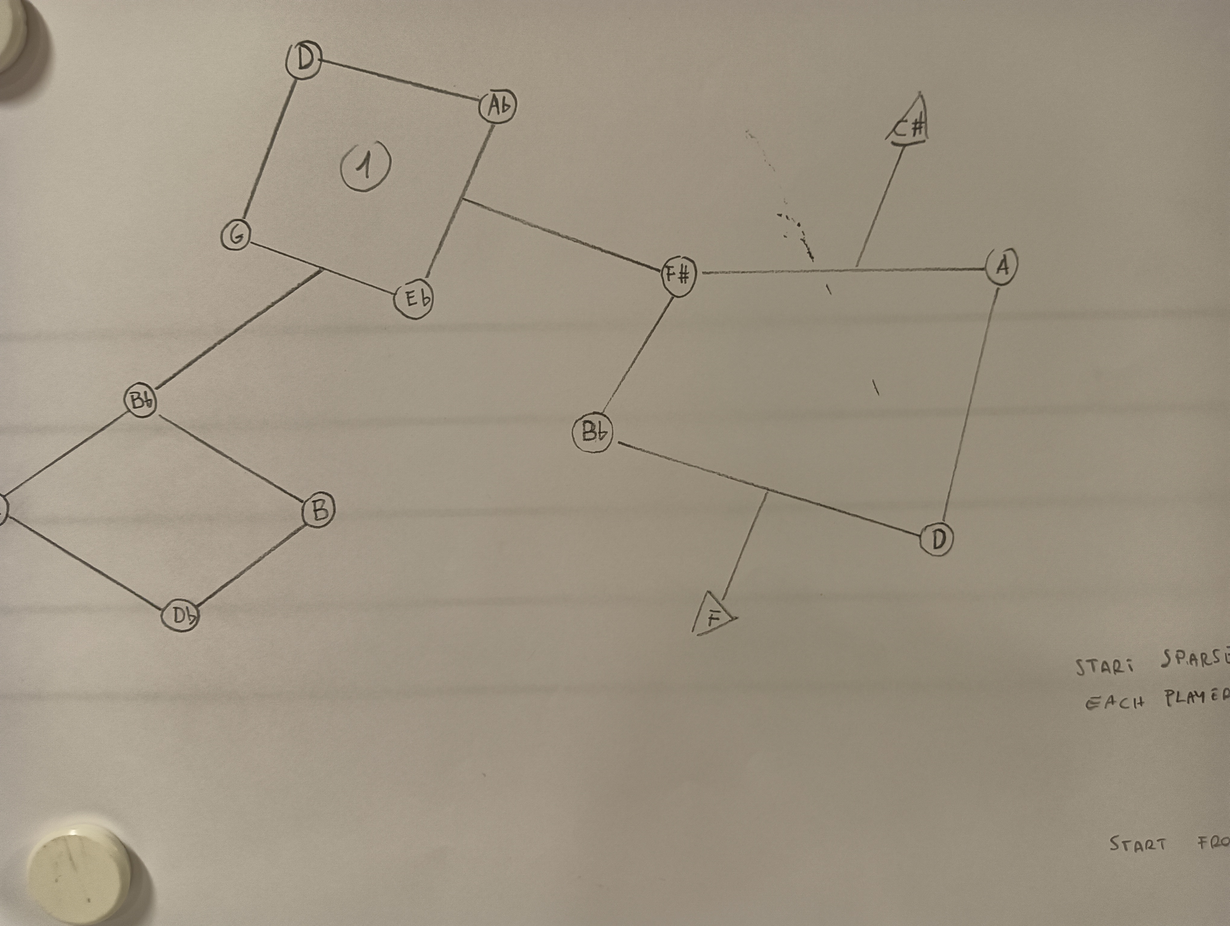- WHAT / Scores
I started writing simple graphic scores using shapes and notes in letter’s form. Initially, I used notes I extrapolated from my previous transcription (see assessment II), later exploring different harmonic possibilities in different ways, like thinking in harmonic “regions”, using intervals layering, using the spectral image of one sound to derive the tonal material, finding tones at the piano, etc. The first scores usually consist of one paper, created with the purpose of testing the method, that can be treated in different ways. They provide a harmonic setting, as at the beginning I thought a harmonic coherence would help the performers “feel” the musicality in the process, compensating with a clear harmonic setting; I also wrote some but mainly, I tried to keep it simple, so that I could focus more on the rhythmic interactions. Below, you can listen to some audio excerpts demonstrating our exploration of various indications, parameters, and instrumentation, resulting in radically different musical outcomes. Through this experience, we defined more suitable structures and development for the compositions. You can find more about the parameters we explored through the laboratory HERE!
Ex.1_ “The Comet is coming”
The musicians who contributed to the laboratory include:
Darius Heid, Ginte PReisaite, Jacob PJ Fossum, Alex Ventling, Miguel Angel Crozzoli, Sölvi Kolbeinsson, Daniel Sousa, João Gato, Torstein Slåen, Antti Lähdesmäki, Karin Ingves, Sarvin Asa, Francesco Colocci, Lorenzo Colocci, Lone Aagot Meinich, Michaela Turcerova, Asger Thomsen, Luka Zabric, Asger Thomsen, Petter Asbjørnsen, Simona Guler, Irene Bianco, Ivar Myrset Asheim, Aurelijus Užameckis, Signe Christa Noah Andersen, Sofia Sá, Marijke Florien Maes, Susana Nunes, Mette Hommel Østerlund, Flavia Huarachi, Kim Mai Tich-Nguyen Thordsen, Marcus Wärnheim, Oscar Andreas Haug, Mark Ibsgaard Gregersen, Krzysztof Hadrych, Sarah Buchner, Ida Nørby, Rosanna Lorenzen, Jacob Kaarsberg, Laura Zöschg, Malina Midera, Jan Kadereit, Judith Parts, Tomas Gubbins
Ex.1_ “The Comet is coming”, is one the first scores I realised, and I am still using today, as it is very simple and clear to explain and usually really effective; Here we have a G minor modal sound, and we can decide the path of the instrument on the constellation; for example, we could have all the instruments 1)starting from the same note, the D in the middle, 2) extend the range (play the note on each register exponentially) 3)add the first coming note “star” in the chosen path (this action is decided by the musicians: when they hear one player changing note, they may follow, adding the next note from the chosen path) 4) the same thing as 3, adding the next tone 5) play the notes in a random order (without enhancing any of them) 6) to cue the end, one of the musicians introduce the “foreign” note/star (F#) 7) all the musicians add the foreign sound to their material 8) slowly take out all the notes from your material, except for the foreign “star” 9) end on a long unison. I would call this kind of composition “static”: when every player is following his different pulse, it sounds like a floating landscape, even though, as we have seen, it is actually possible to draw different ways of movement in the setting so that the composition has a development and a raw structure. But the totality of the material is not changing
Ex.5_ "Drifting" stands as my first multi-tempo composition. It was primarily crafted within the studio, where each musician was recorded individually, guided by their own internal pulse through in-ear monitoring. Later, all the distinct layers were amalgamated, culminating in the completion of the piece's structural framework. The composition relies on a minimal number of notes that gradually transform into unfamiliar sounds, encompassing diverse textures (such as saxophone multiphonics, prepared piano, etc.), culminating in a final resolution on a single tone. Musicians are instructed to maintain a slow pulse, roughly around 30 bpm, and to produce tones lasting between 0 and 10 beats each, with a higher emphasis on longer sounds. This creates a "sparse" pace, where periods of silence outweigh the sounds, thereby allowing moments of auditory space to emerge intermittently.
In Ex.6_ In the piece “Melodic approach” we all play different melodies in the same tonality, following each one our different inner tempo (I later used this score again with the large ensemble); we also experimented with all players executing one melodic frame together, or in a canon, to later slightly diverge with each other, slowely switching bpm. I noted the melodies after playing them on the flute, taking inspiration from traditional Taiwanese music.
Ex.3_ In the piece "Dodecaphonic Constellation," every instrument begins from a distinct note. Each instrument progresses at its unique pace, following the designated lines, and forging its own musical path. Players have the liberty to take rests during the performance. There are two additional possibilities: 1) "Stuck," indicating the repetition of the same note, which allows other instruments to join in; or 2) "Freeze," signifying a prolonged hold on a single tone, where other instruments can also participate. Through individual decision-making in their musical journey, each instrument contributes to the creation of a random harmonic sequence, forming independent melodic movements and chords.
Ex.8_ In "12 Triangles," each instrument commences from Triangle N.1, crafting melodies utilizing the three notes contained within the triangle. Upon the arrival of the next instrument, the ongoing melody transitions to the subsequent triangle. This method gradually unfolds the harmonic spectrum, establishing a framework within which the musicians can generate a diverse musical panorama. During the laboratory session, we proceeded to the second segment of the composition without metronomic guidance. We began executing trills between two chosen notes from Triangles 12 and 11, subsequently expanding this practice to encompass Triangles 10, 9, 8, and 7. The trills were performed continuously, with all players shifting collectively to the next group of notes. Varying the speed of the trill created a new harmonic structure, generating random rhythmic interplay between the different layers, reminiscent of undulating waves.
Ex.2_ In the "9 tones system," each instrument primarily executes a dense sequence stemming from a specific note, maintaining continuous repetition. Upon a signal, the players commence navigating the constellation, exploring potential pathways and repeating each note 16 times, thus moving in harmonic and rhythmic blocks. Gradually, the density of the notes decreases over time.
Ex.4_"The past is a black hole" is the result of layered instrumental recordings from Laboratory I. After creating the track, I transcribed it onto paper for the musicians to perform live. As of now, it is the only composition that follows a linear form, showcasing a succession of events occurring at the discretion of the musicians and concluding with a predetermined ending."
"Ex.9_ 'When We Were Titans' is the initial composition that emerged from my endeavor to translate the starting electronic material. It was recorded instrument by instrument, employing diverse forms of notation supported by listening examples. In certain sections of the piece, musicians improvised based solely on basic instructions, such as melodic material, within a specified beat. Each instrument improvised at a different pulse. Subsequently, I structured the material, arranging and supplementing parts at my discretion, with the aim of 'humanizing' the final outcome."
Ex.7_ "33 notes" is a melody I obtained by translating electronic glitches into acoustic notation through "OrchIdea"; The melody can be played in a variety of ways, for example, it can be proposed as a succession of quarter notes, where all musicians start together from the first note, following the melody but only playing the first of 5 tones: as they all have different pulses, the melodies will slowly start to diverge from each other, generating new rhythmic and harmonic structures.
